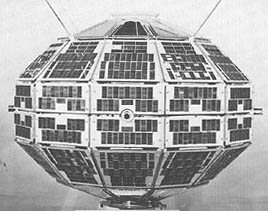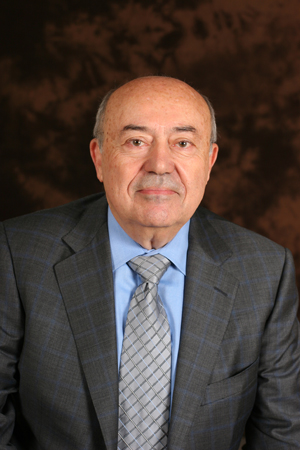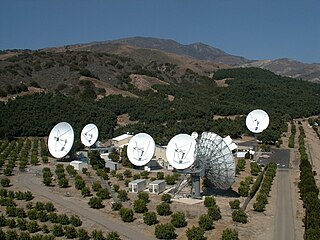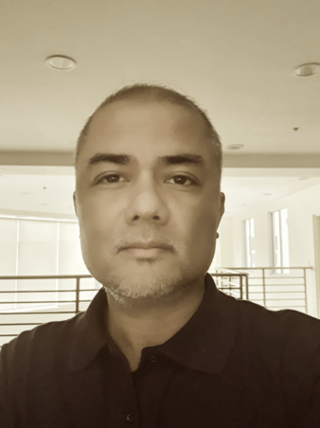Related Research Articles

Alouette 1 is a deactivated Canadian satellite that studied the ionosphere. Launched in 1962, it was Canada's first satellite, and the first satellite constructed by a country other than the Soviet Union or the United States. Canada was the fourth country to operate a satellite, as the British Ariel 1, constructed in the United States by NASA, preceded Alouette 1 by five months. The name "Alouette" came from the French for "skylark" and the French-Canadian folk song of the same name.

Andrew James Viterbi is an Italian Jewish–American electrical engineer and businessman who co-founded Qualcomm Inc. and invented the Viterbi algorithm. He is the Presidential Chair Professor of Electrical Engineering at the University of Southern California's Viterbi School of Engineering, which was named in his honor in 2004 in recognition of his $52 million gift.

The Canadian Space Agency is the national space agency of Canada, established in 1990 by the Canadian Space Agency Act.
John Herbert Chapman was a Canadian space researcher. He started his career with his work on radio propagation and the ionosphere.
The David Florida Laboratory is the Canadian Space Agency's spacecraft assembly, integration and testing centre, in Shirleys Bay, just west of central Ottawa. It is operated by the Canadian Space Agency and rented out to Canadian and foreign aerospace and telecommunications companies and organizations for qualifying space bound equipment such as communication or scientific satellites, or components made to be placed on satellites or installed in a space station. The laboratory was named to honour C. David Florida, a leading Canadian pioneer in space research.

Eberhardt Rechtin was an American systems engineer and respected authority in aerospace systems and systems architecture.
The Communications Research Centre Canada is a Canadian government scientific laboratory for research and development in wireless technologies, with a particular focus on the efficient use of radio frequency spectrum. Its mission is as follows:
Gottfried Ungerboeck is an Austrian communications engineer.
Joachim Hagenauer is an information theorist and professor emeritus at Technical University of Munich. He pioneered the use of soft bits, a coding theory technique that contributes to the high performance of the turbo codes.
The Prince Albert Radar Laboratory (PARL) was a radar research facility operated by the Defence Research Telecommunications Establishment (DRTE), part of the Canadian Defence Research Board. Its primary purpose was to test long-range radio propagation and radar techniques in the presence of the aurora borealis. This was part of a greater ABM effort being carried out in concert with the United States Air Force, and PARL operated along with two similar instruments at the Rome Air Development Centre and MIT Lincoln Laboratory. The site continues to operate today, used as a satellite downlink station known as the Prince Albert Satellite Station (PASS).
John Sullivan Mayo is an American engineer, AT&T executive and seventh president of Bell Labs, known for contributions to the computer and telecommunications industry.
Norman Charles Joseph Beaulieu is a Canadian engineer and former professor in the ECE department of the University of Alberta.

Robert D. Briskman is Technical Executive of Sirius XM Radio.

Veena Rawat is an electrical engineer who specializes in telecommunications. Rawat was the first woman to graduate with a PhD in electrical engineering from Queen's University in Kingston, Ontario, Canada. She held executive positions managing programs related to radio frequency spectrum engineering for all wireless and space communication services in the Canadian Government, was the President of the Communications Research Centre (CRC), and was the Vice President and Ambassador to the International Telecommunication Union, for Blackberry, Advanced Technology Division, Canada. In 2014 she was awarded the Officer of the Order of Canada (OC) for her lifetime achievements and contributions at the national and international levels to wireless communications.

Kenneth O. Hill is a Mexican Canadian physicist who specializes in the field of photonics. In the late 1970s, he discovered the phenomena of photosensitivity in optical fiber and has worked extensively in its applications. He first demonstrated Fiber Bragg gratings and their applications in optical communication and optical sensor systems. Further areas of his discovery and innovation include the phase mask technique for grating fabrication, fiber grating dispersion compensators, and wavelength selective fiber filters, multiplexers and demultiplexers. This field of research has led to the ability to create high speed fiber optic networks as well as many other communication applications that have revolutionized the telecommunications industry.
Professor Shlomo Shamai (Shitz) (Hebrew: שלמה שמאי (שיץ) ) is a distinguished professor at the Department of Electrical engineering at the Technion − Israel Institute of Technology. Professor Shamai is an information theorist and winner of the 2011 Shannon Award.

Joel Joseph Sacro Marciano Jr. is a Filipino engineer, academic and the first and current Director General of the Philippine Space Agency, a government agency under the Office of the President in charge of the Philippines' national space program.

Khanh Dai Pham is a Vietnamese-born American aerospace engineer. He is noted for his work in statistical optimal control theory, game-theoretic operations research of military satellite communications, space control autonomy, and space domain awareness and the government leadership in innovation ecosystem and coalition of government agencies, small business and industry. He is a Fellow of the Air Force Research Laboratory (AFRL), the National Academy of Inventors (NAI), the Institution of Engineering and Technology (IET), the Society of Photo-Optical Instrumentation Engineers (SPIE), the Royal Aeronautical Society (RAeS), the International Association for the Advancement of Space Safety (IAASS), and the Royal Astronomical Society (RAS). He is not only a Fellow of the Institute of Electrical and Electronics Engineers (IEEE), the American Astronautical Society (AAS), and the Asia-Pacific Artificial Intelligence Association (AAIA) but also an Associate Fellow of the American Institute of Aeronautics and Astronautics (AIAA) and the Royal Institute of Navigation (RIN).
References
- 1 2 3 4 5 6 7 8 9 10 11 12 13 "Canada's Telecommunications Hall of Fame" . Retrieved 24 July 2009.
- 1 2 "Colin Franklin". Institute of Electrical and Electronics Engineers - Canada. Retrieved 25 July 2009.
- ↑ "Canada's Telecommunications Hall of Fame Inducts Five New Laureates for 2009" . Retrieved 24 July 2009.
- 1 2 3 4 "EIC HAF Citations - Medal Recipients - 2008" (PDF). Archived from the original (PDF) on 16 July 2011. Retrieved 24 July 2009.
- 1 2 "McNaughton Medallist Biographies" . Retrieved 24 July 2009.
- ↑ "Honours, Order of Canada" . Retrieved 16 August 2010.
- ↑ "John H. Chapman Award of Excellence". Archived from the original on 16 July 2011. Retrieved 24 July 2009.
- ↑ "Julian C. Smith Medal" (PDF). Archived from the original (PDF) on 16 July 2011. Retrieved 28 July 2009.